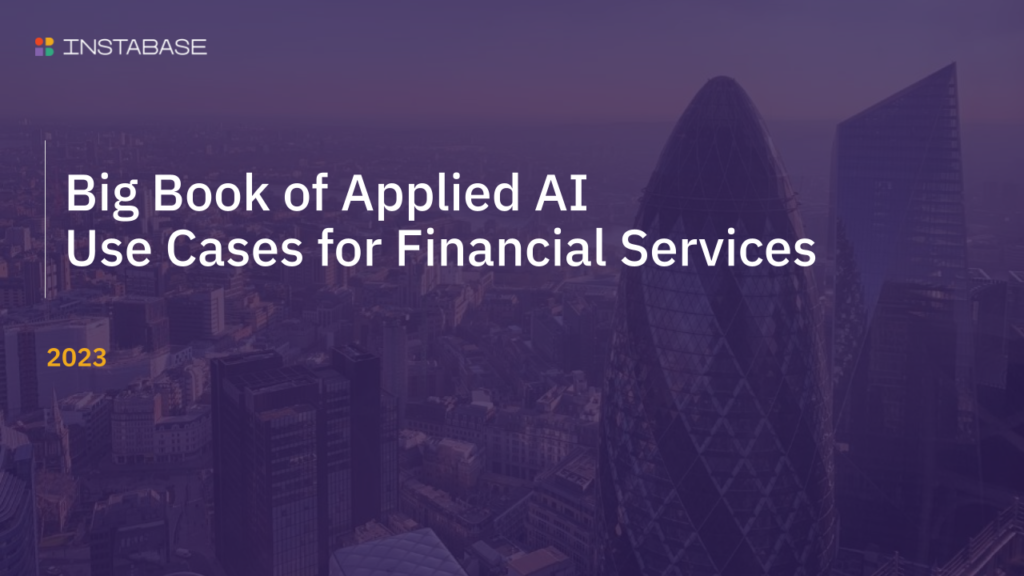Machine Learning and Insurance Underwriting
Several insurance processes can benefit from advancing machine learning technologies, but perhaps nowhere is that more apparent than in the insurance underwriting process.
To understand why that is the case, it makes sense to look at what insurance underwriting actually involves.
Insurance Underwriting: A Quick Definition
Insurance underwriting is the process in which a professional called an insurance underwriter evaluates the risks involved in insuring a person, business, or asset with the purpose of determining pricing for an insurance product.
This is a heavy responsibility, and underwriters are some of the most highly compensated professionals in the insurance industry.
Technologies Used in Insurance Underwriting
In an attempt to automate as much of the underwriting process as possible, insurance organizations have adopted a number of technologies over the years.
Pricing Models
One costly investment insurance companies make to help underwriters is an investment in intricate pricing models. These models are highly effective at helping underwriters provide accurate pricing for policies—when given the proper inputs.
Underwriters face a significant challenge in using this technology because pricing models require structured data. However, the documents with which underwriters actually work are almost always in the form of unstructured data.
As part of their job, underwriters routinely handle a heavy volume of documents. Some of the document types they review include:
| Loss run data | Broker presentations | Submissions forms |
| Proof of Identity documentation | Proof of Income | Tax returns |
| Marriage and death certificates | Payroll data | Medical records |
| Proof of Address documentation | Invoices and estimates | Policy documents |
| Annual reports | And the list goes on… |
Highly variable document types come to underwriters from emails with PDF attachments, postal mail, fax, and even handwritten notes. Before the information can be input into a pricing model, the document structure must be converted from unstructured to structured data.
In addition, data scientists are currently not able to leverage the full richness of incoming data to developer better pricing models as this is effectively locked inside unstructured documents.
Machine Learning Technologies for Document Understanding
To solve this dilemma, insurance companies can take one of two paths. Historically, the path insurers have taken is manual review and processing of documents.
The challenge with that approach is that it is extremely time-consuming and labor-intensive for underwriters. Rather than spending their time on the actual art of underwriting, underwriters bogged down in manual review processes are spending their time on data extraction and data entry. That is a poor use of resources.
The other path insurers can take is to automate document understanding. Machine learning advancements have paved the way for intelligent document understanding.
Optical Character Recognition (OCR), one of the earliest forms of artificial intelligence (AI), is a technology that extracts data from printed or written text from a scanned document or image file and then converts the text into a machine-readable form to be used for data processing.
Early versions of OCR and rules-based engines were trained to recognize specific characters in specific fonts, making it useful for only a small percentage of documents that happened to contain the fonts and characters for which the OCR model was trained.
Then, as machine learning technology advanced, models could be trained to recognize a larger scope of document types and fonts, expanding the reach of document understanding further. Early machine learning models were more effective than rules-based engines, but still sometimes required months of training before they could produce reliable, accurate results.
Today, a subset of machine learning known as deep learning is once again disrupting the field of document understanding. Deep learning models are pre-trained on millions of documents already, which translates into shortened training times for insurance-specific use cases.
Today, insurers can leverage deep learning technologies to rapidly format unstructured data into structured data, which can then be fed into pricing engines for more accurate pricing.
The Business Impact of Machine Learning for Insurance Underwriting
Insurance companies that employ deep learning technology for document understanding reap many benefits in the underwriting process, such as:
- Significant reduction (or in some cases, elimination) of manual document review
- Increased time for underwriters to concentrate on detailed analysis rather than data entry
- Cost savings related to utilizing underwriters optimally
- Potential revenue growth as the underwriting process is accelerated
- Reduction of risk associated with human error in manual reviews
- Unlocking data to leverage in the development of better pricing and intervention models
Instabase Leverages Deep Learning for Insurance Underwriting Processes
The Instabase Platform leverages deep learning technology to ingest documents of any type from any source, extract relevant data from them, and provide that data for consumption in customer applications.
For insurance, Instabase streamlines the conversion of unstructured data into structured data for ingestion into pricing models. Robust pricing models plus Instabase’s highly accurate document understanding based on deep learning technology enables underwriters to focus on what matters most in determining the level of risk and appropriate pricing for every policy.
Instabase: The Best Answer for Automated Insurance Underwriting Software
The Instabase Platform leverages deep learning technology and extensible building blocks to help insurers automate their underwriting processes. Instabase goes to work right away, employing deep learning to ingest any document in any format, structure it according to the requirements of the software in place (such as a pricing engine), and return highly accurate, reliable results.
To learn more about the Instabase solution for insurance, please check out our insurance solution page.




